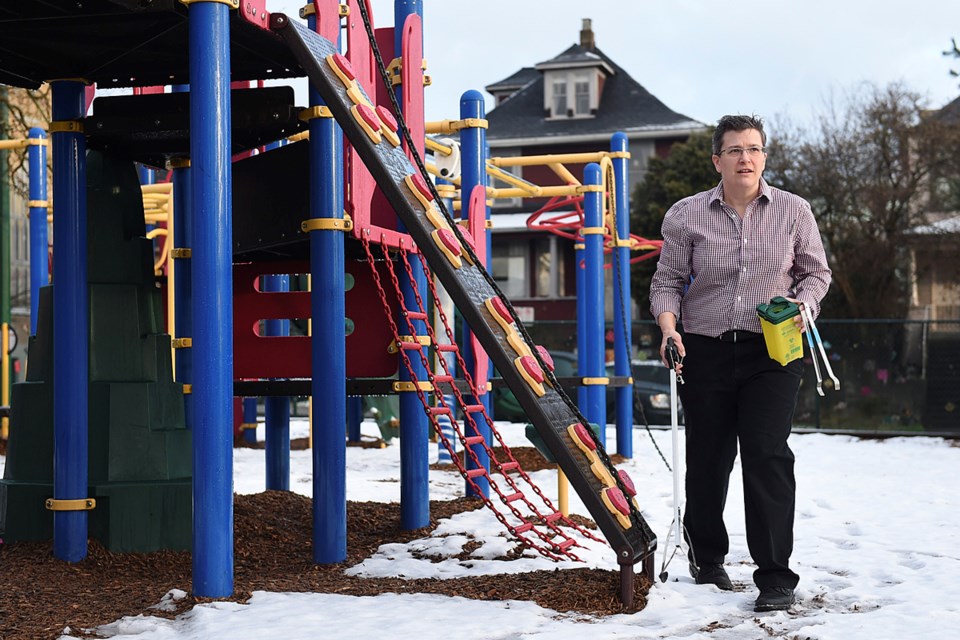Before children arrive at the Strathcona Community Centre for childcare and until school starts in classrooms next door, an adult searches the playground for used needles.
Childcare workers carry sharps disposal boxes as they sweep the grounds multiple times through the day because, as happened earlier this month, a broken crack pipe can turn up near the slides just before class lets out at the end of the school day.
“We find something every day,” said Veronica Light, the co-ordinator of the Strathcona childcare centre. Between Vancouver School Board contractors and staff, including the principal himself, community centre employees and childcare workers, multiple people check the grounds numerous times a day for used needles and other garbage that may contain blood or bodily fluids and present a risk if not properly thrown out.
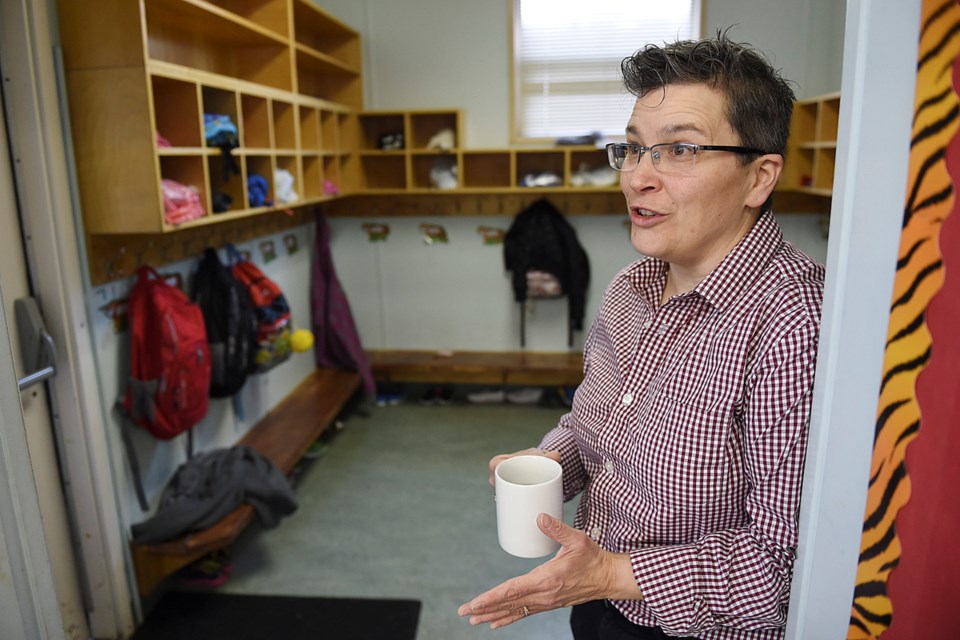
“I don’t blame anyone who is using I.V. drugs and I feel they are doing what they have to do for themselves,” said Light.
Forty kids attend preschool at Strathcona and another 170 are registered for licensed care provided by the community centre in a city-owned portable and inside the 126-year-old brick schoolhouse in the mornings and afternoons outside of class time.
Roughly 5,000 injection drug users live in the Downtown Eastside, according to a 2013 city profile of the neighbourhood. Some drug users have the wherewithal to poke used syringes into the wood banisters of staircases, which Light believes is a deliberate effort to make them easier to spot and dispose of but also to keep the sharp end concealed from curious little hands.
“I recognize they could be former Strathcona kid or a parent, possibly a sibling, or auntie or uncle," she said. “They are not the enemy. Many people clean up and more people use around here than the garbage we find. There are just some people who, in that state, are not able to clean up their garbage. However, I don’t like finding underwear in the garden.”
The twice or thrice daily sweeps come with anecdotes that might appal residents elsewhere in the city, but the specific reality of living and working and raising children in the Downtown Eastside is one of the reasons the Strathcona Community Centre Association may be offered a unique deal with the park board. The association had been asking for guaranteed annual funding of $200,000, but there is a possibility it will be offered a different operating agreement than the city’s other 20 community centres. The park board will discuss the needs of the centre at its next meeting March 27. In the meantime, the sweeps continue.
It’s a rare morning that Light or Edwin Rodriguez, a daycare staffer who does daily sweeps before children arrive at the centre, don’t pick up and dispose of a used syringe or condom, discarded clothing or human feces. The garbage increases as the weather warms up. Year-round, they find cardboard out in the open beside the school’s brick walls, under stairs, and sheltered below the slides and suspended bridges of the child-sized jungle gym.
When doing a sweep of the small lot, they use a long pincer and small pair of tongs to place hazardous waste such as bloodied gauze, needles, plastic caps and wrappers into secure disposal boxes. On a warm summer day, Light said they can collect as many as 25 needles in their sweep of the school yard and neighbourhood destinations such as MacLean Park. The trash is considered dangerous because it could contain human blood and some items are sharp enough to break skin, making disease transmission a frightening risk.
“It’s Strathcona, so our kids know. They know what all the needle trash is,” said Light, noting the wrapper from a stick of string cheese resembles the clear plastic envelope that houses a syringe.
“Our kids know when we go outside to play, they sit or stand on the side as we do a sweep for anything – for condoms, for any needle trash, any drug paraphernalia, for clothes because sometimes we have clothes here that get discarded, for dog poop and human waste as well.”
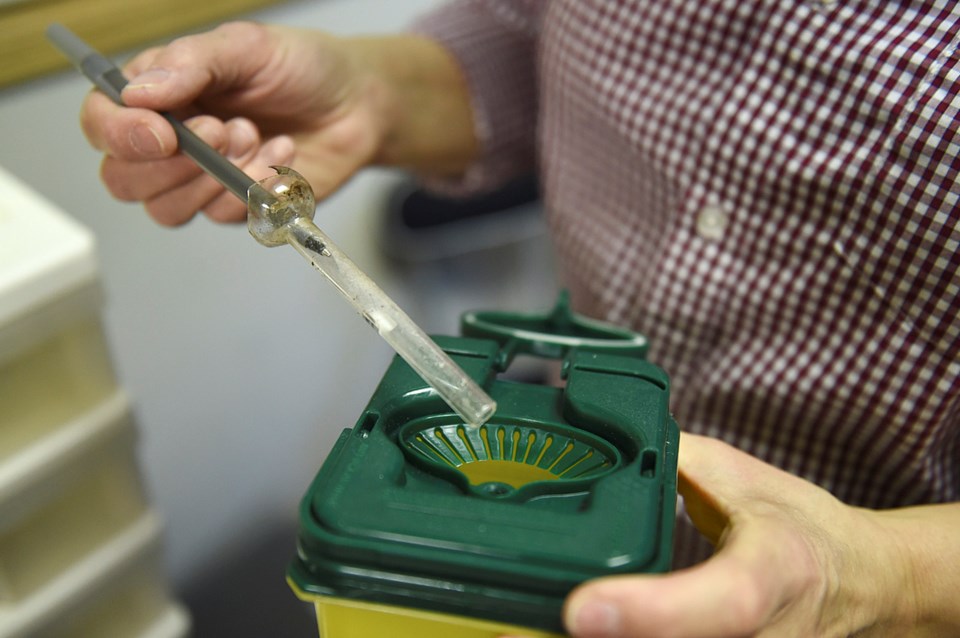
In January, the park board was widely criticised after a child reportedly handled a used syringe in a public washroom at the Creekside Community Centre. The gymnasium was doubling as an emergency warming shelter during a cold snap and, after the holiday break, the multiple uses meant patrons with overlapping needs were sharing the public space. The park board has since said it would place sharps boxes in all community centres.
“If I called [park board chairman] Mike Wiebe every time we found a needle, he’d have a full-time job just responding to that,” said Light.
Many children living in Strathcona know to identify the signs and alert an adult, she said. “No one has ever gotten hurt here. I think our kids are pretty savvy about it.”
The Strathcona Community Centre Association made its pitch for additional funding to park board commissioners and more affluent community centres across the city because it is located in and serves an economically depressed neighbourhood. Many high-needs residents disproportionally rely on government subsidies compared to other parts of Vancouver, though Strathcona is not the only community centre dealing with poverty and hungry children.
Nearly one-third of Strathcona families are considered low-income (compared to 16 per cent of families city-wide) and nearly half of those families are single-parent households (compared with 30 per cent across the whole city). The median annual income is about $14,000 in the DTES, though in Strathcona, a section within the larger neighbourhood, Light described a top-fifth of residents who are educated professionals and relative high-earners, some of whom are building additional equity through having purchased a detached heritage house. Those families also send their children to the Strathcona daycare and elementary school and, according to Light, many pay more than the monthly childcare fee to help subsidize poorer households. It’s a donation because the fees are already relatively low, but it’s also one of the ways the neighbourhood cares for its own.
“The families that we have in the neighbourhood who have enough money, somewhat frequently but not all, they recognize they are getting a good deal and they will make a donation,” said Light.
Those parents pay less at Strathcona than they would at almost every other licensed daycare in the city, she said, because the fees are below average and are subsidized to keep barriers as low as possible.
Fees at Strathcona are $175 a month for after-school care, the same as the government subsidy, which Light says is the lowest in Vancouver at a licensed facility.
“That one-fifth recognized that if they were in any other community, they’d likely be paying as much as $532 and so they will make a donation to the community centre association. That is part of the fundraising effort.”
According to the volunteer association that runs the Strathcona Community Centre, about one-third of families enrolled in childcare are eligible for a provincial subsidy because they are considered low-income and receive social assistance. Another third are deemed working poor and are not eligible for a provincial subsidy but still cannot afford to pay the monthly $175. The remaining one -hird of families pay the full fee.
Parents who can afford other options still pick Strathcona for their children, said Light, who lives in the neighbourhood with a family that includes two daughters aged 10 and 12.
“Those families choose to keep them here because it’s safe, it’s high quality childcare. Part of the reason it’s high quality is because of the fundraising and because my staff are kids who grew up in the neighbourhood or who have some sort of connection to the community here,” she said. “I think most of the staff have some sort of realization like, ‘Hey this kid is just like me or like my family situation growing up.’”
Because of its complex demographics that include a concentrated demand for government assistance, the neighbourhood has a high rate of food insecurity, which essentially means people go hungry.
The community centre fundraises to support numerous breakfast and weekend backpack food programs and relies on private donors to fill additional gaps. For example, the preschoolers have a serving of dairy each morning because one donor, whom they call the “cheese and milk man,” gives a dollar for each one of the 40 youngest kids every weekday of the month.
“There are kids who don’t have milk to drink at home,” said Light.
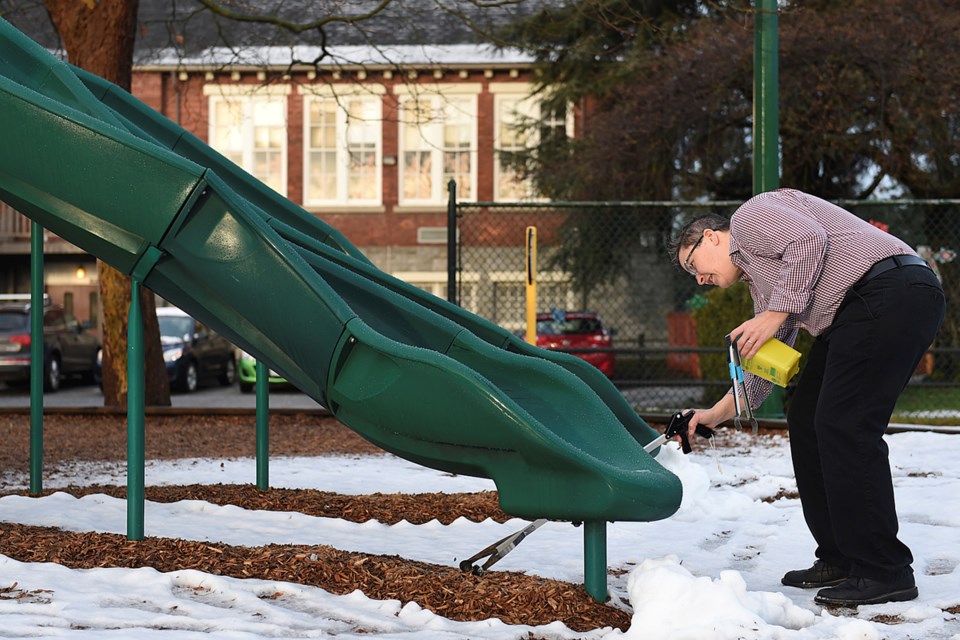
The Strathcona Community Centre Association, along with 13 other associations, is in favour of a wealth distribution model that would see more affluent centres fund poorer ones in other neighbourhoods.
Not all associations support this. Representatives from West Side associations, for example, have argued the community they serve is specific to only those living near its centres.
“It’s not fair for these kids to go hungry,” said Light. “So, yes, it is not our job, and I recognize that a society should not rely on the park board giving money and assistance to feed children because, if all things were working great, there would be no need and no starving children. But I am telling you right now, there are some very serious situations here. When kids are hungry, somebody has to do something.”
Light and her staff face a range of daily challenges that remind them they are working in one of Canada’s most complex neighbourhoods.
The quiet grounds around the school and childcare centre draw people who find shelter under bushes and dry surfaces under eaves. Some areas are well lit, which can attract a person with a specific need. Other areas are in shadow, which affords sleeping. And, when the grass and bushes are full, they provide a sense of privacy for specific kinds of adult business. Almost all the trash gets left behind and, in the morning, kids arrive.
When she opens the door to the back steps of the building to begin her morning sweep, Light almost always finds the same man right outside, sleeping. About a half dozen men return to the respective places they have staked out on the property, she added.
“We’re friendly, but it’s not like we make them coffee,” she said. “There is a certain awareness that this is where childcare happens.”
Light doesn’t know the man who sleeps on the back steps by name, but they have a respectable rapport and she says he leaves once she wakes him.
“These may be people, who as kids, attended here. They are definitely neighbourhood people and, for whatever reason or whatever their issues, they are using outside.”
It’s but one more example of the unique reality of working and living and raising children in Strathcona.
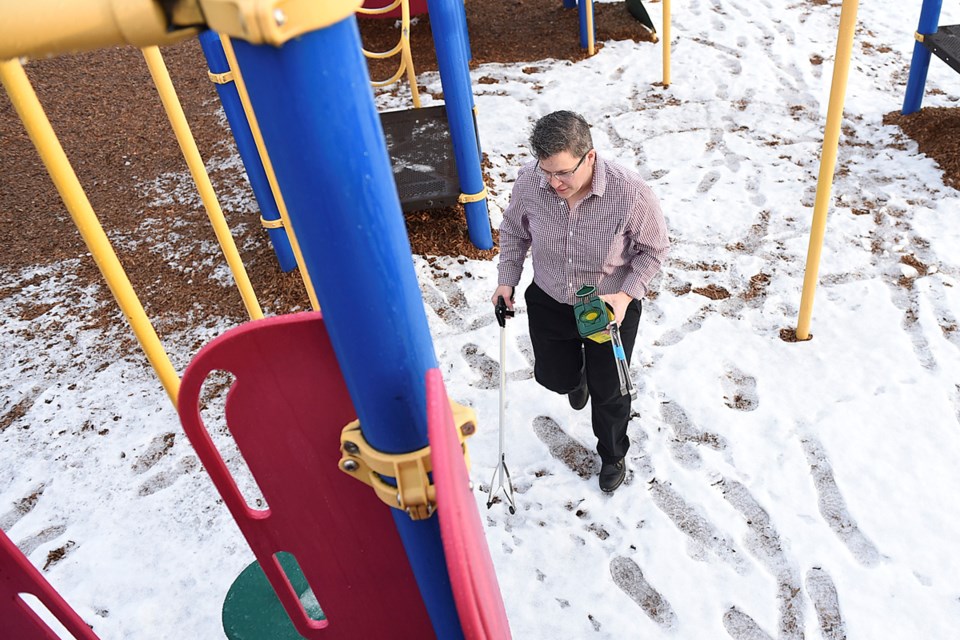
Twitter: @MHStewart
